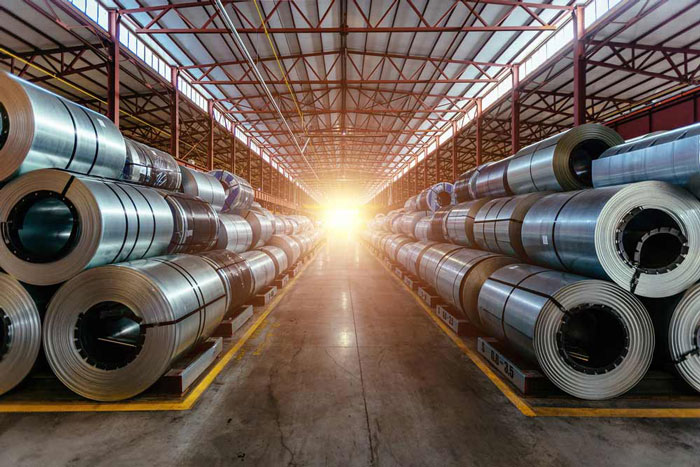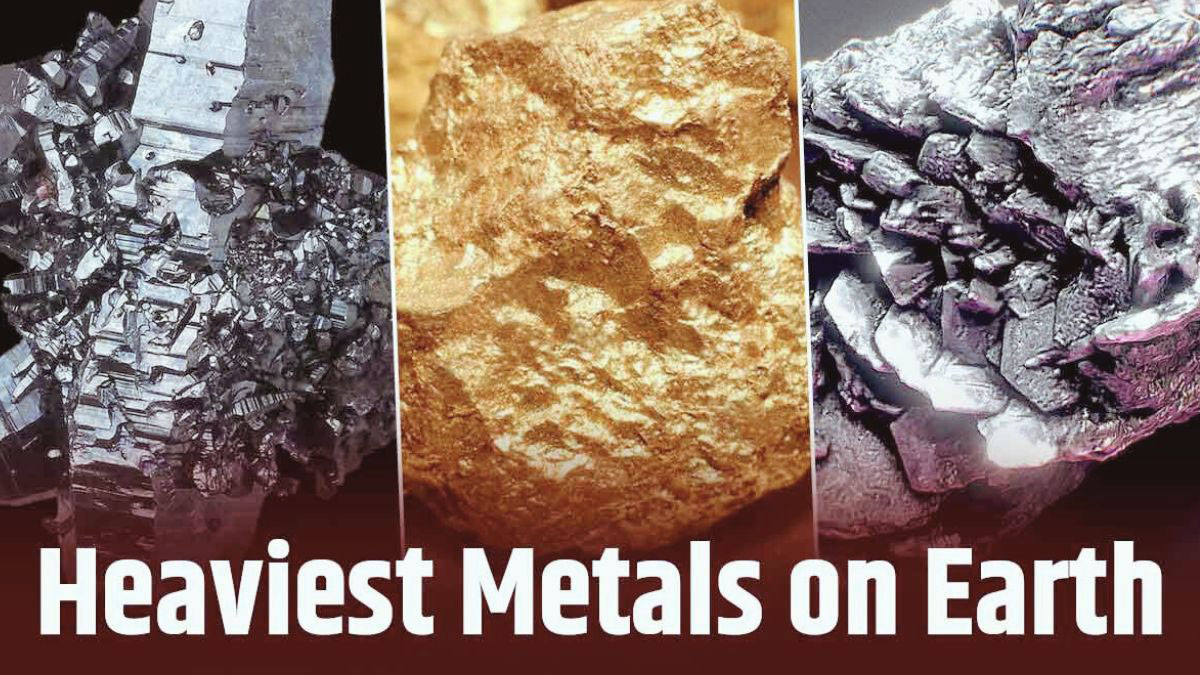Heaviest Metals on Earth: Exploring Density and Uses
When you think of heavy metals, lead might come to mind. But did you know there are metals out there that make lead look feather-light? The world of metals is full of surprises, especially when it comes to density. Density, which refers to how tightly matter is packed together, plays a crucial role in determining the heaviness of a metal.
Among the densest metals on Earth, osmium stands out. This bluish-white, lustrous metal is not only extremely dense but also twice as heavy as lead. With a density of 22.59 grams per cubic centimeter, osmium tops the list of the heaviest metals found naturally on our planet. Its unique properties make it a fascinating subject for those interested in the periodic table’s hidden wonders.
Key Takeaways
- The heaviest naturally occurring metals, such as osmium and iridium, are characterized by their high density, which significantly surpasses that of more common metals like lead.
- Osmium stands as the densest metal with a density of 22.59 g/cm³, utilized mainly in hardening heavy-duty equipment due to its remarkable properties.
- Understanding both density and atomic weight is essential for comprehending the characteristics and applications of heavy metals, affecting industries from aerospace to medical technology.
- Metals like tungsten and uranium are valued for their durability and substantial atomic weight, finding roles in military, energy production, and innovative medical therapies.
- Despite their industrial importance, the environmental and health implications of heavy metals necessitate diligent handling and regulation to prevent pollution and health risks.
Understanding Heavy Metals
When exploring the concept of heavy metals, understanding both density and atomic weight proves essential. Density measures how much mass is packed into a given space, while atomic weight represents the mass of an atom. This dual perspective provides insight into why some metals are deemed the heaviest.

Dense Metals
- Osmium: As the densest naturally occurring metal with a density of 22.59 g/cm³, osmium captures attention. Its unique properties, including a bluish-white hue, make it notable not just for its weight but also for its applications in industries needing hard, durable materials.
- Iridium: Following closely with a density of 22.56 g/cm³, iridium stands out for its toughness and high melting point. It’s further valued in electronics and automotive industries, often in alloy form.
- Platinum: Known for its density of 21.4 g/cm³, platinum’s appeal includes its ductility and resistance to corrosion, essential in jewelry and catalytic converters.
Atomic Weight Considerations
While density highlights compactness, atomic weight focuses on how heavy individual atoms are. For example, uranium, with a significant atomic weight, is crucial in energy production despite not being as dense as osmium.
Practical Implications
Understanding these heavy metals’ properties aids in selecting materials for specific functions. From aerospace to electronics, metal density and atomic weight determine usability and efficiency in various fields.
Density vs. Atomic Weight
Understanding the distinction between density and atomic weight is crucial when discussing heavy metals. Density measures how tightly mass is packed in a given volume, expressed in grams per cubic centimeter (g/cm³). This attribute explains why some metals, like osmium, sink in water, as they are denser than the water itself. Osmium’s density, for instance, is a notable 22.59 g/cm³.
On the other hand, atomic weight reflects the mass of an atom’s protons and neutrons, typically expressed in atomic mass units (amu). This number highlights the element’s heaviness without referring to its volume or how it might interact with other substances.
Key Differences
- Density: Reflects mass per unit volume, influencing material interactions.
- Atomic Weight: Represents mass of an atom, indicating elemental heaviness.
Practical Applications
When using metals in industries like aerospace or electronics, both density and atomic weight guide material selection. High-density metals like iridium (22.56 g/cm³) offer toughness, while metals with varied atomic weights fit specific roles based on their atomic properties.
These characteristics demonstrate metals’ usability and efficiency, balancing density and atomic weight as deciding factors.
Top Heaviest Metals on Earth
Understanding the heaviest metals on Earth requires considering density as a key factor. These metals are incredibly dense, making them significantly heavier than more common metals like lead.
Osmium
Osmium stands as the densest metal on Earth, with a density of 22.59 g/cm³. Its bluish-white luster and brittleness at high temperatures make it unique. Though rarely used in pure form, osmium often appears in alloys for hardening heavy-duty equipment, such as surgical instruments and electrical contacts.
Iridium
Iridium is the second densest metal, closely following osmium with a density of 22.56 g/cm³. It stands out due to its resistance to corrosion and ability to withstand high temperatures. This silvery-white metal finds usage in spark plugs and electrodes, serving industries requiring robust materials.
Platinum
Platinum’s density of 21.4 g/cm³ makes it one of the heaviest. It is notable for its ductility and resistance to tarnishing, contributing to its widespread use in jewelry and automotive emission systems. Its unreactive nature also benefits medical applications and catalytic converters.
Rhenium
Rhenium presents a density of 21.2 g/cm³ and is known for its high melting point. As an element used in high-temperature turbine engines and electrical contacts, rhenium’s robust properties support applications demanding extreme conditions.
Tungsten
Tungsten showcases a density of 19.25 g/cm³. Best recognized for its exceptional hardness and high melting point, it suits heavy-duty applications like light bulb filaments and military projectiles, where durability under heat is essential.
Uranium
Uranium has a substantial density of 18.95 g/cm³. Primarily utilized in nuclear energy production, uranium’s heavy atomic weight and density enable efficient energy generation. Its radiological properties also position it for innovative medical therapies.
Each of these metals exhibits unique qualities suited to specific industrial and technological applications, illustrating the diverse capabilities heavy metals offer.
Significance of Heavy Metals
Heavy metals play a pivotal role across numerous sectors due to their unique properties. Understanding their significance helps unlock innovative applications and anticipate potential risks.
Applications in Industry and Technology
Heavy metals’ high density and unique characteristics make them indispensable in various industries.
- Aerospace: Heavy metals like tungsten, known for its durability, are used in propulsion systems and shielding components.
- Automotive: Platinum, valued for reducing emissions, is extensively utilized in catalytic converters for emission control.
- Electronics: Gold is valued for its excellent conductivity in microchips, connectors, and printed circuit boards.
- Medical: Rhenium plays a role in developing anti-cancer treatments through its radioactive isotopes.
Environmental and Health Implications
While heavy metals offer technological advancements, they pose environmental and health challenges if mismanaged.
- Pollution: Unauthorized disposal of metals like mercury can contaminate water sources, affecting aquatic life and humans.
- Health Risks: Prolonged exposure to metals like lead can result in serious health issues, including neurological damage and cardiovascular problems.
- Regulation: International guidelines aim to ensure safe use by setting exposure limits and promoting clean-up initiatives of contaminated sites.
Understanding the full spectrum of heavy metals’ applications and their implications ensures their benefits are maximized while minimizing potential risks.
Conclusion
Understanding the heaviest metals on Earth opens a window into their remarkable properties and diverse applications. As you explore these dense elements, consider how their unique characteristics influence industries from aerospace to electronics. Recognizing the balance between their benefits and potential risks is crucial for harnessing their full potential responsibly. Whether you’re drawn to the toughness of tungsten or the corrosion resistance of iridium, each metal’s role is vital in advancing technology and innovation. Embrace the knowledge of these metals to appreciate their impact on modern life and the importance of sustainable practices in their use.







